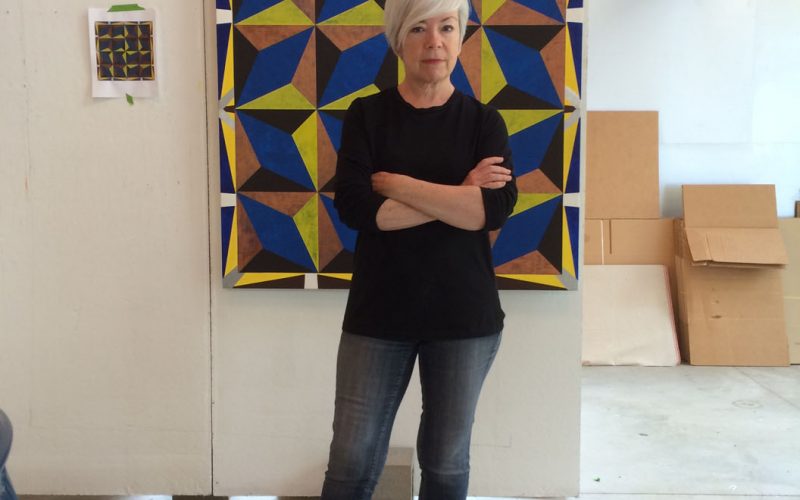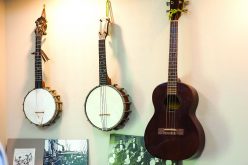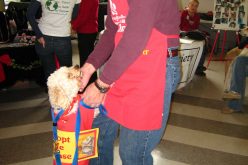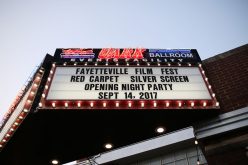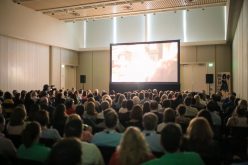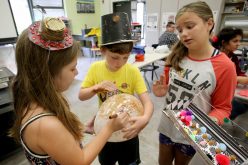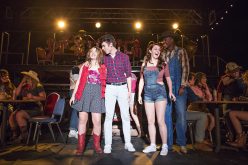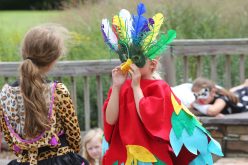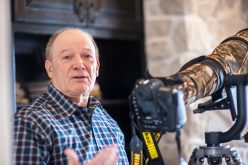“‘Grammar of Ornament’ explores the interdisciplinary practices of contemporary artists who sit at the intersection of art and design to consider the ways that ornament can create visual languages.”
That’s how Jennifer Wilson, Walton Arts Center spokeswoman, describes the new exhibit open now in the Joy Pratt Markham Gallery. The exhibition features artwork by Shepard Fairey — an American contemporary street artist, graphic designer, activist and illustrator who became widely known during the 2008 U.S. presidential election for his Barak Obama “Hope” poster; Ryan McGinness — an American artist known for creating paintings, sculptures and environments that use the visual language of public signage, corporate logos and contemporary iconography; and Mary Judge — an American artist known for her complex and reductive works on paper, sculpture in cast concrete and painting in tempera acrylic.
But what can one expect to see, in layman’s terms? Judge explains, emailing from her New York studio.
“I would say my work is a little exotic and also unique,” she says. “It’s abstract, yet you can feel clear references to natural forms or the unseen structures that underlay all of life’s forms, such as flower growth patterns, a snowflake or fractals.
“I am always searching for a new fresh kind of effect and image that brings the viewer in for a closer look but does not resemble any kind of art they have seen in the past.”
Judge took time to answer these additional questions for The Free Weekly. The exhibit continues through March 17.
Q. Was there a particular piece of art that inspired your desire to create art?
A. There was no one piece of art that inspired me to create: I wanted to be an artist since I was very young. I was in love with horses, and I wanted to draw them. I got a book, “How to Draw Horses,” but my mother also brought books of famous paintings into the house and took us to New York to the museums when we were young. I loved drawing, and my desire was to be able to draw and paint all day long. So I studied art and became an artist.
Q. How would you describe your art?
A. I work in various media that are traditional in themselves, but I have developed totally new ways to work with them. My ‘spolvero’ drawings are a case in point where I adapted the pounced stencil from fresco to make my “Concentric Shape Series” drawings or my use of laser- and hand-cut stencils to create my latest series that I call “Pop Flowers.”
I adapted the use of repetition, often in a square composition, some time ago; something magic happens with multiple forms, one thing repeated is transformed into something completely new. I play with these patterns to see what kind of things might happen. I like to keep a sense of mystery to the work — maybe it seems like something “found” or a printed type image. It’s important to me that my work in some way bows to the great art of the past. I also find a lot of inspiration in things outside fine art such as design or industrial forms and processes and nature.
Q. When it says you create reductive works on paper, sculpture in cast concrete and painting in tempera acrylic — can you explain those mediums?

Courtesy Photo
Artist Mary Judge says she might want a series of works “to be similar. … I avoid, however, overplanning a work; in fact, with my working methods it’s almost impossible to get something totally planned.”
A. A good example of a work that is “reductive” would be Picasso’s famous series of bull drawings: He began with a drawing of an entire realistic bull and then repeated it, eliminating elements until it was stripped to its essential form. A lot of abstraction, is in some way “reductive.”
“Cast” concrete is simply a liquid cement poured into a mold. (I made my own molds.) Just as a bridge on an overpass might be made by pouring liquid cement into wooden molds, my cast concrete sculpture is the same.
Tempera acrylic is type of paint made like all paint from powdered pigment which is simply crushed stones or earth mixed with a binder to “hold” it together in a paint, pastel or colored pencil. The binder ingredient is in this case acrylic. In oil painting? It’s generally linseed oil. In acrylic paint? It’s acrylic medium. I do not make my own paint I use a brand called Flashe. I like it because it dries quickly and has a matte surface and a very rich deep color.
I also use pigment in its powdered form for my colored powdered pigment drawings, and that is when I use a stencil. I put the powdered pigment in a piece of cloth to make a “pounce” bag and then beat the stencil-covered drawing paper; the pigment is therefore laid down onto the paper in the open areas. When finished I fix it with a spray fixative so that is won’t smear.
I also have made prints which use an entirely different process. In my prints, we cut metal plates based on my drawings, using a laser. (We had these made.) Then you roll paint with a roller onto the face of these plates, put a piece of paper down on top of that and roll them through a big press which presses the paint “into” and onto the paper face. You can make many prints off the same plates. But in my work I like each one to be a little bit different. So I make changes on each print.
— Becca Martin-Brown
bmartin@nwadg.com
FAQ
‘The Grammar of Ornament’
WHEN — Through March 17; gallery hours are noon to 2 p.m. Monday through Friday and one hour prior to most performances
WHERE — Joy Pratt Markham Gallery at the Walton Arts Center in Fayetteville
COST — Free

Courtesy Photo
Artist Mary Judge says she might want a series of works “to be similar. … I avoid, however, overplanning a work; in fact, with my working methods it’s almost impossible to get something totally planned.”
INFO — waltonartscenter.org
BONUS — Private gallery tours may be scheduled in advance by calling 571-2766. Please allow three business days to arrange for tour guides.

